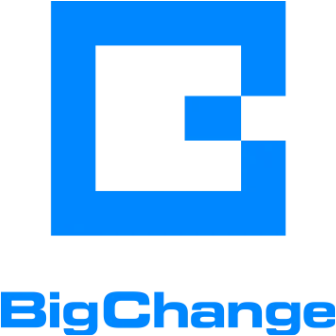
Sageprovides businesses with software and services that are simple and easy to use, as they work with togive customers that feeling of confidence.

Sage musste eine Hypothese über die Präferenzen der Kunden für eine neue Funktion testen, die in Erwägung gezogen wurde, aber es fehlten die notwendigen Daten zur Unterstützung.

Das Unternehmen wollte mit einer Pendo-Umfrage feststellen, ob die Kunden die neue Funktion wünschen, und mehr über ihre Erwartungen erfahren.

Innerhalb von zwei Tagen erhielten sie 1.059 Umfrageantworten, die ihre vorgeschlagene Funktion bestätigten und Einblicke darüber gaben, wie ihre Kunden die Funktion nutzen wollten. Zwei Monate später lieferte das Produktteam die neue Funktion mit einer Zustimmungsrate von 90 %.
Warum ist es so schwer, Ihren Kunden das zu geben, was sie wirklich wollen?
Sie könnten einfach nach ihrem Feedback fragen. Ihr Erfolg hängt jedoch davon ab, ob:
Was als einfache Frage und Antwort beginnt, wird zu einem viel komplexeren Prozess.
The clever folks at Sage found a solution. They polled their customers, analyzed their responses, produced a solution, and confirmed that it met customers’ needs.
So hat Sage Pendo verwendet, um außergewöhnliche Leistungen der Kundentelepathie zu erreichen.
Sage bietet Lohnbuchhaltungs-, Personal- und Finanzsoftware für über zwei Millionen Kunden weltweit an. Eines seiner Produkte, Sage Intacct, ist eine cloudbasierte Software, die kleinen und mittelständischen Unternehmen hilft, ihre Anforderungen an Finanzbuchhaltung und Compliance zu erfüllen.
Die Entwicklung von Produkten und Funktionen, die Kunden unterstützen, steht bei allen Initiativen des Unternehmens an erster Stelle. Sage priorisiert Projekte, die positive Auswirkungen für die Kunden haben – eine ergebnisorientierte Denkweise –, anstatt einfach nur Aufgaben zu erledigen.
Diese wertschöpfende Denkweise veranlasste das Produktteam, eine neue Funktion in Betracht zu ziehen: Kunden die Möglichkeit zu geben, Rechnungen zu aktualisieren, nachdem sie zur Genehmigung eingereicht wurden. Das Team hatte lange darüber nachgedacht, wie man diese Funktion entwickeln könnte, wollte jedoch Beweise dafür, dass die Kunden sie auch wollten, brauchten und nutzen würden.
Das Sage-Team musste die Denkweise seiner Benutzer verstehen, bevor es eine Änderung einführte, die sich auf die Abrechnungsfähigkeiten ihrer Kunden auswirken könnte. Die Endbenutzer arbeiteten in einer stark regulierten Branche mit strengen Compliance-Anforderungen und rigorosen Prüfungen bei jedem Schritt. Diese neue Funktion musste dieser Realität Rechnung tragen.
Wer sollte Änderungen vornehmen dürfen? Was wäre, wenn ein Gesetzentwurf bereits teilweise genehmigt worden wäre? Wie würden sich Sicherheits- und Complianceüberlegungen auf dieses neue Feature auswirken?
Und vor allem: Würde die Entwicklung dieser Funktion ein klares vorteilhaftes Ergebnis für die Kunden liefern?
Jennifer Carlson, Direktorin für UX, und Tracy Tremblay, Gruppen-Produktmanagerin bei Sage, leiteten ihre jeweiligen Teams an, um einen Plan für die Einführung der potenziellen neuen Funktion zu erstellen.
Sie erstellten eine Pendo In-App-Anleitung, die mit einer Umfrage verknüpft war, um den Wunsch der Nutzer nach der Funktion und ihre Erwartungen an deren Funktionsweise zu ermitteln.
Aber Carlson und Tremblay schickten die Umfrage nicht an ihren gesamten Kundenstamm. Sie erstellten ein Segment, um den Leitfaden nur an Benutzer zu richten, die direkt in der Rechnungsfreigabe tätig waren. Dadurch wurde sichergestellt, dass die Umfrage nur relevante Benutzer erreichte, was die Antwortrate erhöhte und zuverlässigere Daten lieferte.
Innerhalb von nur zwei Tagen erhielten die UX- und Produktteams über 1.000 Antworten, die eine überwältigend positive Resonanz auf die Funktion zeigten. „Die Kunden wünschten sich die zusätzliche Funktion sehr, und die Umfrageinformationen änderten und verbesserten die ursprünglichen Anforderungen und das Design, um die Bedürfnisse unserer Kunden direkter zu erfüllen“, so Carlson.
Die Umfragedaten lieferten genau das, was das Team benötigte, um seine Hypothese zu bestätigen. Dieser Kundenkonsens beendete die internen Debatten und ermöglichte eine zuversichtliche Entwicklung durch das Team.
Als zusätzlichen Bonus war das endgültige Design einfacher zu entwickeln als ursprünglich geplant. Das Feedback der Benutzer führt zu weniger restriktiven Kontrollen, sodass die Entwicklung weniger Zeit in Anspruch nahm.
Nach nur zwei Monaten lancierte Sage die Funktion „Rückruf einer eingereichten Rechnung“. Da die Funktion in hohem Maße auf Kundenfeedback basierte, setzte das Produktteam große Hoffnungen in ihren Erfolg.
Um die Zufriedenheit zu messen, umfasste der Launch der Funktion eine gezielte Umfrage, die Feedback von den Benutzern einholte, die mehrfach mit der neuen Funktion interagiert hatten. Eine Rekordzahl von Kunden bewertete sowohl die Benutzerfreundlichkeit als auch die Erfüllung ihrer Bedürfnisse mit „stimme voll und ganz zu“, und viele nahmen sich die Zeit, ihr Feedback im optionalen Freitextfeld zu hinterlassen.
„Es ist befriedigend und ermutigend, durch das Kundenfeedback zu hören, dass wir etwas geschaffen haben, das sie wirklich brauchen, verwenden und mögen“, berichtet Carlson.
Carlson und Tremblay waren mit der ersten Reaktion mehr als zufrieden. Aber sie mussten noch herausfinden, ob die Kunden die Funktion auch weiterhin nutzen würden.
All that positive customer feedback is qualitative data—related to emotion, not expressible in practical terms. While gauging sentiment is incredibly valuable on its own, Sage also needed to see if the quantitative data—the real-life product usage—told the same story.
Sage nutzte Pendo Analytics, um diese quantitativen Daten nachzuverfolgen. Das Unternehmen konnte aufzeichnen, wie viele Benutzer die Funktion aktivierten und wie viele Klicks jeder Benutzer darin machte.
Clicks on the Recall buttons and links grew tremendously during the first six months post-launch. Clicks increased from 1519 to 4166, representing a 174% growth with an ongoing upward trend. The number of unique visitors per week for the Recall buttons and links also grew from 462 to 944, a 104 % increase.
Die Daten zeigten außerdem, dass die Benutzer eine Präferenz dafür hatten, wo sie mit der Funktion interagieren wollten, wobei eine 2:1-Präferenz für die Verwendung der Funktion innerhalb jeder einzelnen Rechnung gegenüber der Massenrückruf-Schaltfläche bestand, was zur Weiterentwicklung der Funktion beitrug.
Sage engagiert sich konsequent, um die Kundenbedürfnisse herauszufinden und diese zu erfüllen. Da sie keine telepathische Bindung zu den Kunden aufbauen können, ist Pendo die nächstbeste Option. „Pendo hilft uns, ein besseres Kundenerlebnis zu schaffen, weil wir schnellen Zugriff auf Kundenfeedback haben“, sagt Tremblay.
Mit Pendo war es für Sage ein Leichtes:
Mit Pendo kann Sage gemeinsam mit dem Kunden gestalten. Sie können die Nutzung schnell messen, Feedback sammeln und basierend auf ihren Erkenntnissen verfeinern.
Es ist einfach für Softwareunternehmen, eine „Liefermentalität“ anzunehmen: Lassen Sie uns etwas entwickeln und es so schnell wie möglich ausliefern, damit wir das nächste entwickeln können. Mit Pendo verwirklicht Sage eine „Ergebnismentalität“. Sie liefern keine massiven monolithischen Software-Updates; sie verbessern den Arbeitsalltag ihrer Benutzer.
And Sage doesn’t have to wonder if their customers like this approach. They have the data to prove it.


